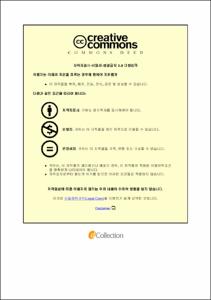인공지능을 이용한 어류의 간장 조직병리학적 변화 판독 자동화 기술 가능성에 관한 연구
- Alternative Title
- Studies on possibility of automatic reading of histopathological changes in the liver of fish using artificial intelligence
- Abstract
- Liver function tests through serum are widely used worldwide as indirect indicators to check for liver damage. Among them, aspartate aminotransferase (AST) and alanine aminotransferase (ALT) are most known enzymes that indicate liver damage. The enzymes are in hepatocytes and are released into the blood during the destruction of hepatocytes. AST and ALT are also used in various studies in olive flounder and rainbow trout. However, there is little study of the normal values of the enzymes. And research that correlates AST, ALT values and liver damage in olive flounder and rainbow trout is also minimal. Therefore, it is difficult to use AST and ALT values as indirect indicators of liver failure of olive flounder and rainbow trout for diagnostic purposes. Therefore, in this study, the correlation was investigated by analyzing the pathological lesions of the hepatocytes and by measuring AST and ALT values by sampling blood serum and liver tissues from eight olive flounder farms and eight rainbow trout farms.
Also, biopsy of liver is very important in diagnosing liver damage. However, biopsy is not common in fish and takes a long time because it has a subjective nature and cannot be analyzed and quantified through automated equipment and programs. Thus, there are attempts to use artificial intelligence for quick, accurate and automated analysis. In order to create AI liver program, pathological lesions in liver sampled in 765 olive flounder, 891 rainbow trout, were classified as circulatory disorders, regressive change and inflammatory lesions. The classified photos of olive flounder and rainbow trout liver tissues were taught using the deep learning artificial intelligence program, Teachable Machine Program. In addition, Fifteen fish in each eight new fish farms, olive flounder and rainbow trout farms, were sampled and analyzed the pathological lesions of liver and compare them with the results of the analysis using the learned program to verify their accuracy. The results of this study could be suggested as basic data for using serum analysis in diagnosis of olive flounder and rainbow trout liver damage and confirm the possibility of applying artificial intelligence to biopsy.
- Issued Date
- 2021
- Awarded Date
- 2021. 2
- Type
- Dissertation
- Publisher
- 부경대학교
- Affiliation
- 부경대학교 대학원
- Department
- 대학원 수산생명의학과
- Advisor
- 허민도
- Table Of Contents
- Ⅰ. 서론 1
Ⅱ. 재료 및 방법 5
1. 대상어류 및 채집방법 5
2. 생체량 측정 5
3. 혈약 채취와 GOT, GPT 검사 6
4. 조직학적 분석 6
5. 병리조직학적 평가 6
6. 통계학적 분석 8
7. 병변 판독 인공지능 모델 제작 8
8. 병변 판독 인공지능 모델 검증 9
Ⅲ. 결과 11
1. 생체량 측정 11
2. GOT, GPT 측정 13
3. 병리조직학적 평가 16
4. 통계학적 분석 19
5. 병변 판독 인공지능 모델 검증 25
Ⅳ. 고찰 37
Ⅴ. 요약 42
Ⅵ. 조직사진 및 그림 설명 44
감사의 글 47
참고문헌 48
- Degree
- Master
- Files in This Item:
-
-
Download
 인공지능을 이용한 어류의 간장 조직병리학적 변화 판독 자동화 기술 가능성에 관한 연구.pdf
기타 데이터 / 1.06 MB / Adobe PDF
인공지능을 이용한 어류의 간장 조직병리학적 변화 판독 자동화 기술 가능성에 관한 연구.pdf
기타 데이터 / 1.06 MB / Adobe PDF
-
Items in Repository are protected by copyright, with all rights reserved, unless otherwise indicated.